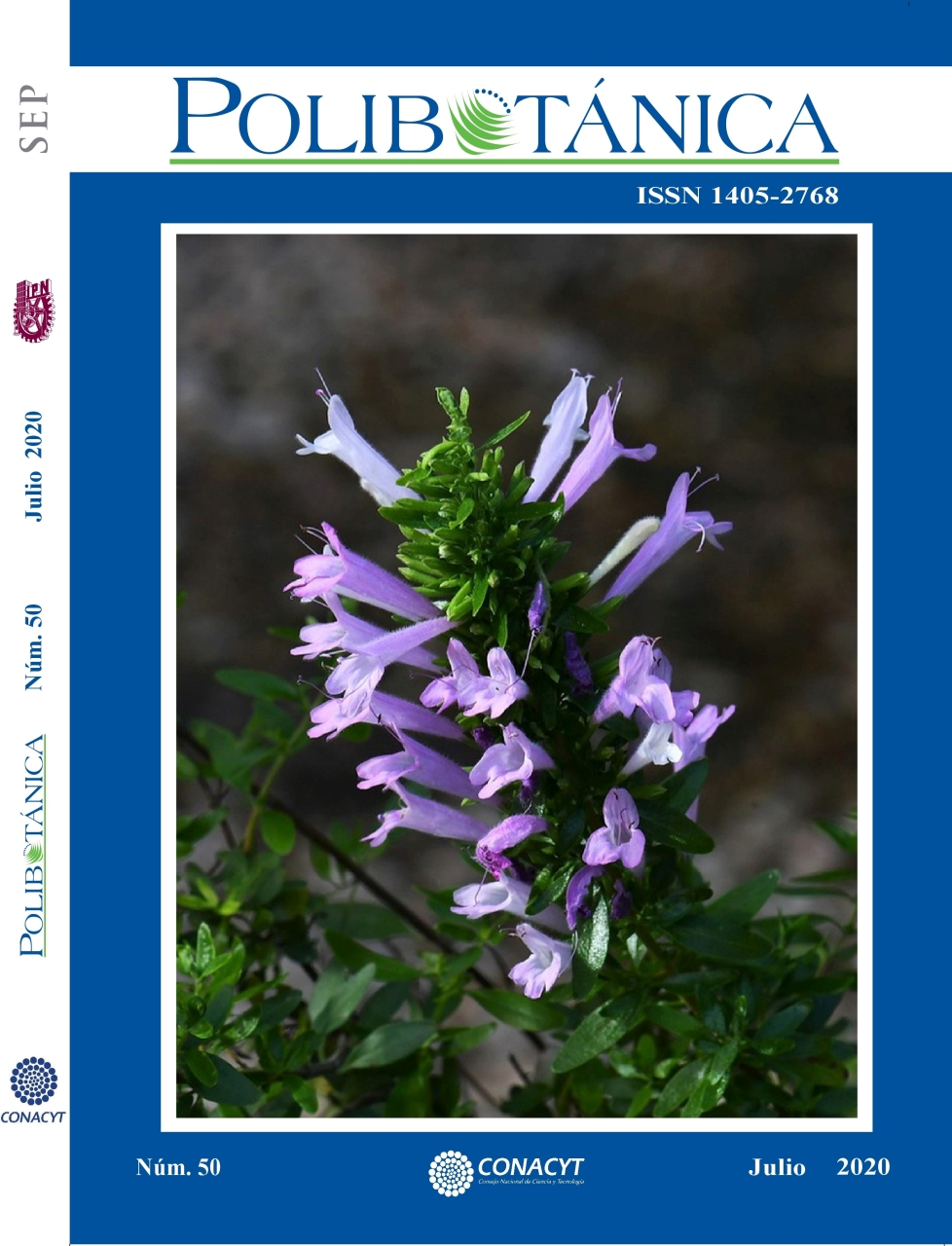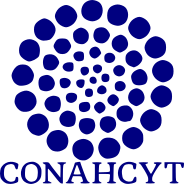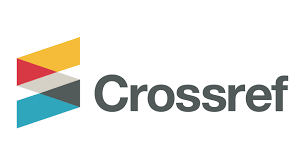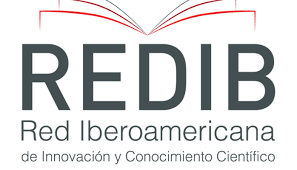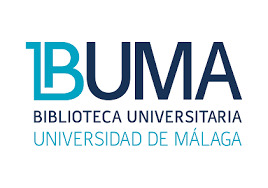Substrates and doses of fertirrigation in the accumulation of total sugars and growth of Agave salmiana (Asparagaceae)
Keywords:
Agave salmiana, azúcares solubles, solución nutritiva.Abstract
Agave salmiana reproduces mainly asexually both commercially and wildly. In order to increase the genetic diversity of the populations, propagation by seeds is necessary. The objective of this research was to evaluate the effect of the Steiner universal solution concentration and substrates on the plant growth of Agave salmiana plants obtained from seeds under greenhouse conditions and their total sugar accumulation. Two experiments were established. In the first one, plants were growth in expanded perlite as substrate and watered with Steiner nutrient solution in two concentrations 25 and 100% with two irrigation frequencies every three and seven days. In a second experiment, plants were grown with three substrates: perlite, volcanic rock and a mixture of agave stalk with volcanic rock (2: 1) and watered with two concentrations of the Steiner 25 and 100% nutrient solution. In the first experiment the number of unfolded leaves was significantly superior in the plants of the treatments S25-R3 and S100-R3, the length of the leaves of the plants grew at the treatments S25-R3, S100-R3 and S100-R7 was significantly equal and superior to the plants of treatment S25-R7; the leaf width and rosette diameter was significantly higher in plants of treatments S25-R3 and S100-R7. In the plants of treatments S25-R3 and S100-R3, the total dry weight biomass and the aerial part was significantly higher; the dry weight of the roots was statistically lower in the plants of the treatment S25-R7. The accumulation of total sugars and fructose did not present significant differences between plants of the treatments. The concentration of glucose was statistically lower in the plants of treatment S25-R7 and for this treatment the sucrose concentration was significantly higher. In the second experiment, the unfolded leaves was significantly superior in plants of the perlite treatment, the leaf length and width of the plants grown in volcanic rock and perlite was significantly lower than in the mixture of volcanic rock and agave stalk. The total biomass dry weight and the aerial part were significantly higher in the plants grown in perlite and volcanic rock. The concentration of total sugars and glucose was higher in the plants that grew in pearlite and the mixture of volcanic rock and stalk, while the fructose and sucrose were lower in the plants grown in pearlite and the mixture of volcanic rock and stalk. The perlite substrate was more efficient and irrigated every third day with 25% of the concentration of the Steiner Solution in the plant growth of Agave salmiana. Those plants showed greater total dry weight, and number of leaves spread. The effect of the inert perlite and volcanic rock substrates on the variables total biomass dry weight and the part area, length and width of the plant leaves was significantly higher than in the mixture of the inorganic and organic substrates.
References
Aguilar, J. B., Enríquez del V. J. R., Rodríguez O. G., Granados S. D. & Martínez C. B. (2014). El estado actual de Agave salmiana y A. mapisaga del Valle de México. Revista Mexicana de Agrosistemas, 1, 106-120.
Enríquez, V. J. R., Alcara, V. S. E., Rodríguez, O. G., Miguel, L. M., & Vázquez, C. M. (2016). Fertirriego en vivero a plantas de Agave potatorum Zucc micropropagadas-aclimatadas. Revista Mexicana de Ciencias Agrícolas, 5, 1167-1177.
Enríquez, V. J. R., Estrada, S. A., Rodríguez, O. G., Velasco, V. V., y Campos, A. G. V. (2013). Sustrato y dosis de fertirriego en la aclimatización de vitroplantas de Agave americana var. oaxacensis. Revista de la Facultad de Ciencias agrarias UNCuyo, 45, 2, 341-348.
Enríquez, V. J. R., Cruz, V. I. & Carrillo, C. G. (2012). Acclimatization of Agave angustifolia Haw. vitroplants in inert substrates and fertirigated with different nutrimental dose. Acta Horticulturae, 947, 101-104.
Enríquez, V. J. R., Velasco, G. V. A. & Hernández, G. E. (2009). Agave angustifolia plants grown with different fertigation doses and organic substrates. Acta Horticulturae, 843, 49-55.
García, M. A. J. (2007). Los agaves de México. Ciencias, 87, 14-23.
INEGI (Instituto Nacional de Geografía y Estadística) (2009). www.inegi.gob.mx
Jiménez, T. J. A. (2016). Efecto de la temperatura en características bioquímico-fisiológicas de plantas jóvenes de dos especies de Agave. (Tesis de Maestría). Colegio de Postgraduados. Montecillo, Estado de México.
Lambers, H., Chapin, F. S. & Pons, T. L. (2008). Photosynthesis. In Lambers H., Chapin F.S. III & Pons T. L (Eds.), Plant Physiological Ecology (pp. 1-99). New York, USA: Springer.
Martínez, R. S., Trinidad, S. A., Bautista, S. G. & Pedro, S. E. (2013). Crecimiento de plántulas de dos especies de mezcal en función del tipo de suelo y niveles de fertilización. Revista Fitotecnia Mexicana, 36 (4), 387-393.
Mas, P. J. (2003). Guía práctica para la producción de planta en un vivero. Comisión Forestal del Estado de Morelia, Michoacán, México.
Minitab LLC. 2017. Minitab Statical Software (versión 18) para Windows. State Collage, Pennsylvania USA.
Nobel, P. S. (1998). Los incomparables agaves y cactos. D. F., México: Trillas.
Nobel, P. S. (1977). Water relations of flowering of Agave deserti. Botanical Gazette, 138, 1-6.
Pérez, S. R., Enríquez, V. J. R., Castañeda, H. E., Velasco, V. G. R. & Campos, A. G. V. (2014). Dosis de fertirriego durante la aclimatización plantas de Agave americana micropropagadas. Revista Mexicana de Agrosistemas, 1, 20-27.
Peña-Valdivia, C. B., Sánchez-Urdaneta, A. B., Aguirre, R. J. R., Trejo, C., Cárdenas, E. & Villegas, M. A. (2006). Temperature and mechanical scarification on seed germination of maguey (Agave salmiana Otto ex Salm-Dick). Seed Science & Technology, 34, 47-56.
Ramírez-Tobías, H. M., Peña-Valdivia, C. B., Aguirre, R. J. R., Reyes-Agüero, J. A., Sánchez-Urdaneta, A. B. & Valle, G. S. (2012). Seed germination temperatures of eight Mexican Agave species with economic importance. Plant Species Biology, 27, 124-137.
Reyes, S. J. (2013). Conservación y restauración de cactáceas y otras plantas suculentas mexicanas. Comisión Nacional Forestal. Zapopan, Jalisco, México.
Rosales, M. S., Sigala, R. J. A. & Bustamante, G. V. (2013). Producción y trasplante de Agave en vivero. Instituto Nacional de Investigaciones Forestales, Agrícolas y Pecuarias. Campo Experimental Valle de Guadiana, Durango, México.
Sami, F., Yusuf, M., Faraz, A., & Hayat S. (2016). Role of sugars under abiotics stress. Plant Physiology and Biochemistry, 109, 54-61.
Sebben, A. M., Degen, B., Azevedo, V. C. R., Silva M. B., de Lacerda, A. E. B., Ciampi, A. Y., Kanashiro, M., F. S., Thompson, I., & Loveless, M. D. (2008). Modelling the long-term impacts of selective logging on genetic diversity and demographic structure of four tropical tree species in Amazonia forest. Forest Ecology and Management, 254, 335-349.
Servicio de Información Agroalimentaria y Pesquera (SIAP) (2013). www.gob.mx/siap.
Villar, S. P., Uscola, M., y Jacobs D. F. (2015). The role of stored carbohydrates and nitrogen in the growth and stress tolerance of planted forest trees. New Forest, 46. 813-839.
Villaseñor, J. L. (2016). Checklist of the native vascular plants of México. Revista Mexicana de Biodiversidad, 87, 559-902.
Viola, R., & Davies, H. V. (1992). A microplate reader assay for rapid enzymatic quantification of sugars in potato tubers. Potato Research, 35, 55-58.
Zúñiga, E. L. (2013). Nutrición de Agave tequilana y manejo de los fertilizantes en un Sistema de producción intensiva (riego por goteo) Instituto Nacional de Investigaciones Forestales, Agrícolas y Pecuarias. Centro de Investigación Regional del Noreste. Campo Experimental Las Huastecas, Villa Cuauhtémoc, Tamaulipas, México.
Downloads
Published
Issue
Section
License

Polibotánica by Departamento de Botánica de la Escuela Nacional de Ciencias Biológicas del Instituto Politécnico Nacional se distribuye bajo una Licencia Creative Commons Atribución-NoComercial-CompartirIgual 4.0 Internacional.

